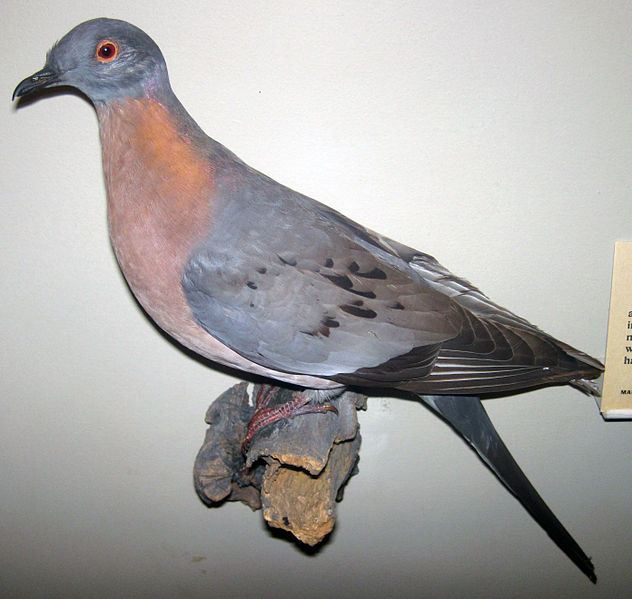Fasciculus:Ectopistes migratorius (passenger pigeon).jpg

Mensura huius perspectionis: 632 × 599 elementa imaginalia. Aliae mensurae: 253 × 240 elementa imaginalia | 506 × 480 elementa imaginalia | 810 × 768 elementa imaginalia | 1 080 × 1 024 elementa imaginalia | 2 160 × 2 048 elementa imaginalia | 2 784 × 2 640 elementa imaginalia.
Sua resolutio (2 784 × 2 640 elementa imaginalia, magnitudo fasciculi: 1.73 megaocteti, typus MIME: image/jpeg)
Historia fasciculi
Presso die vel tempore fasciculum videbis, sicut tunc temporis apparuit.
| Dies/Tempus | Minutio | Dimensiones | Usor | Sententia | |
|---|---|---|---|---|---|
| recentissima | 16:39, 2 Aprilis 2015 |  | 2 784 × 2 640 (1.73 megaocteti) | FunkMonk | Transferred from Flickr via Flickr2Commons |
Nexus ad fasciculum
Ad hunc fasciculum nectit:
Usus fasciculi per inceptus Vicimediorum
Quae incepta Vici fasciculo utuntur:
- Usus in bn.wikibooks.org
- Usus in en.wikipedia.org
- Holocene extinction
- Passenger pigeon
- User:Nutcracker100
- List of the prehistoric life of Alabama
- List of the prehistoric life of Florida
- List of the prehistoric life of Tennessee
- List of the prehistoric life of West Virginia
- List of the prehistoric life of North Carolina
- List of the Cenozoic life of Alabama
- List of the Cenozoic life of Wyoming
- List of the Cenozoic life of Virginia
- List of the Cenozoic life of North Carolina
- List of the Cenozoic life of Georgia (U.S. state)
- List of the Cenozoic life of Florida
- List of the Cenozoic life of California
- User:Catfurball
- User:Abyssal/Image captions to use
- Wikipedia:Userboxes/Birds
- User:Abyssal/Aspect ratio table
- User:Toohak113
- User:Diriector Doc/Ubx/Passenger Pigeon
- Wikipedia talk:WikiProject Userboxes/Ideas/Archive 15
- User:Lin Xuexi
- User:Diriector Doc/UbxGalaries/Nature
- User:Wikiselkie
- User:Geekgecko
- User:Missingnohk97
- User:Cedelmwood/Userboxes
- User:Mishmash Ideas
- User:좀비 브렌다
- User:Pinkelekoladele
- User:Asocos
- User:CryolophosaurusEllioti/Userboxes
- User:.samtxt.
- User:Pigginn
- User:Trashgoose
- User:WHEOOButEncyclopedia
- User:Davefrfr
- User:Mushroom133
- User:Locust Valley
- User:I.Do.In.Fact.Exist
- Usus in en.wikibooks.org
- Usus in es.wikipedia.org
- Usus in fr.wikipedia.org
- Usus in ka.wikipedia.org
- Usus in no.wikipedia.org
- Usus in pl.wikipedia.org
- Usus in pt.wikipedia.org
View more global usage of this file.
